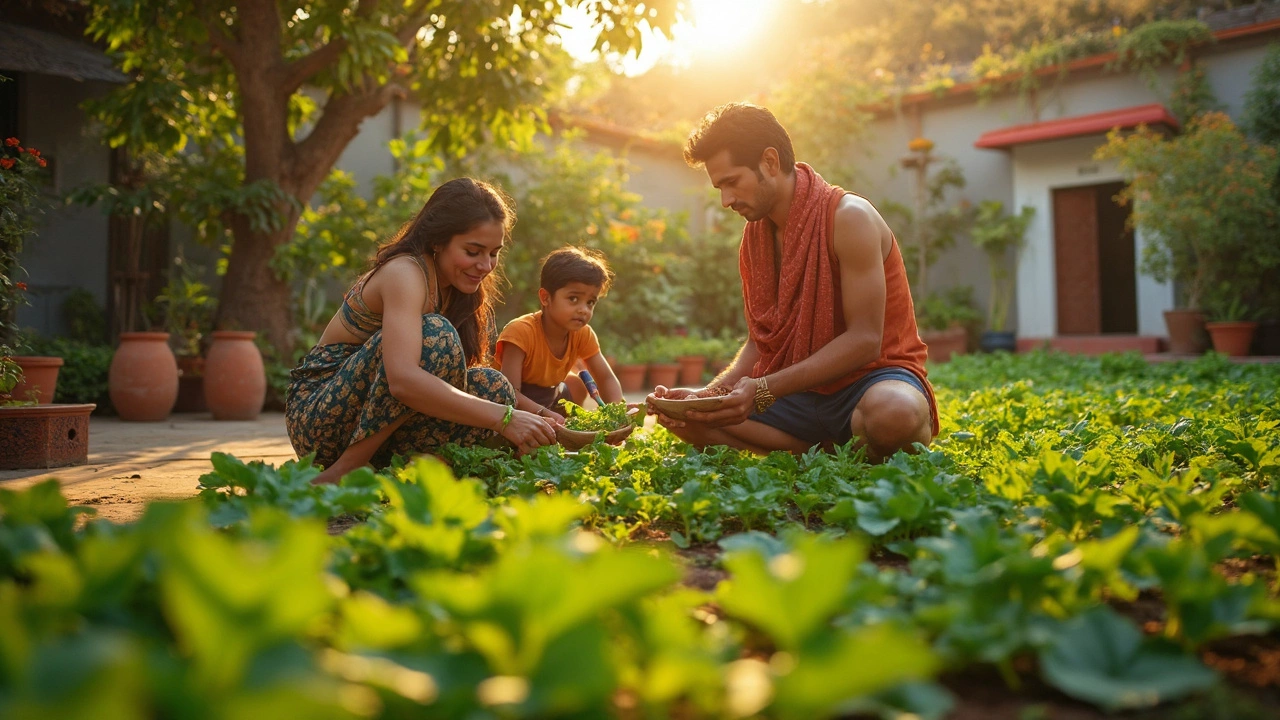Wondering which vegetable takes the crown for sustainability? This article cuts through the hype and shares which vegetable is the best choice for eco-friendly home gardens. You'll learn what makes a vegetable truly sustainable, practical tips for growing it, and clever ways to use every part. Find out how making a small switch in your garden can have a big impact on water use, soil health, and climate resilience. Even beginners will find it easy to start growing these environmental champions at home.
Sustainable Crops: What They Are and How to Grow Them in India
When we talk about sustainable crops, plants grown in ways that protect the soil, save water, and avoid harmful chemicals over the long term. Also known as regenerative crops, they’re not just a trend—they’re the only way farming can keep feeding people without breaking the land. In India, where monsoons are unpredictable and soil is often worn thin, growing sustainable crops isn’t optional. It’s survival.
Sustainable crops don’t just mean organic. They’re chosen for how well they fit the local climate, how little water they need, and how much they help the soil instead of hurting it. Think millets like bajra and jowar—native grains that need almost no fertilizer and can grow where rice fails. Or legumes like pigeon pea and black gram, which naturally fix nitrogen in the soil so you don’t need to add chemicals. These aren’t exotic imports. They’re the old-school crops that our grandparents grew, and now science is proving they’re the smartest choice for today’s farms and balconies.
What makes a crop sustainable isn’t just the plant itself—it’s how you grow it. That’s why practices like composting, drip irrigation, and companion planting matter just as much. If you’re using compost, a natural soil amendment made from kitchen scraps and yard waste that boosts fertility without synthetics. Also known as black gold, it to feed your plants, you’re already on the right path. If you’re using drip emitters, a system that delivers water slowly and directly to plant roots, cutting waste and preventing disease. Also known as precision irrigation, it instead of flooding your garden, you’re saving water and protecting your soil structure. And if you’re growing native vegetables, plants that evolved in India’s climate and require fewer inputs than imported varieties. Also known as traditional crops, it like amaranth or cluster beans, you’re not just eating better—you’re supporting local ecosystems.
You won’t find these ideas in big agribusiness ads. But you’ll find them in the posts below—real stories from Indian gardeners who swapped chemical fertilizers for compost, replaced thirsty crops with drought-tolerant ones, and turned tiny balconies into mini-farms. Whether you’re dealing with dense clay soil, a dry terrace, or rabbits nibbling your zinnias, the solutions are all connected to one thing: working with nature, not against it. These aren’t theory-heavy guides. They’re hands-on fixes, tested in Indian conditions, that actually work. What you’ll find here is how to grow food that lasts—without costing the earth.
